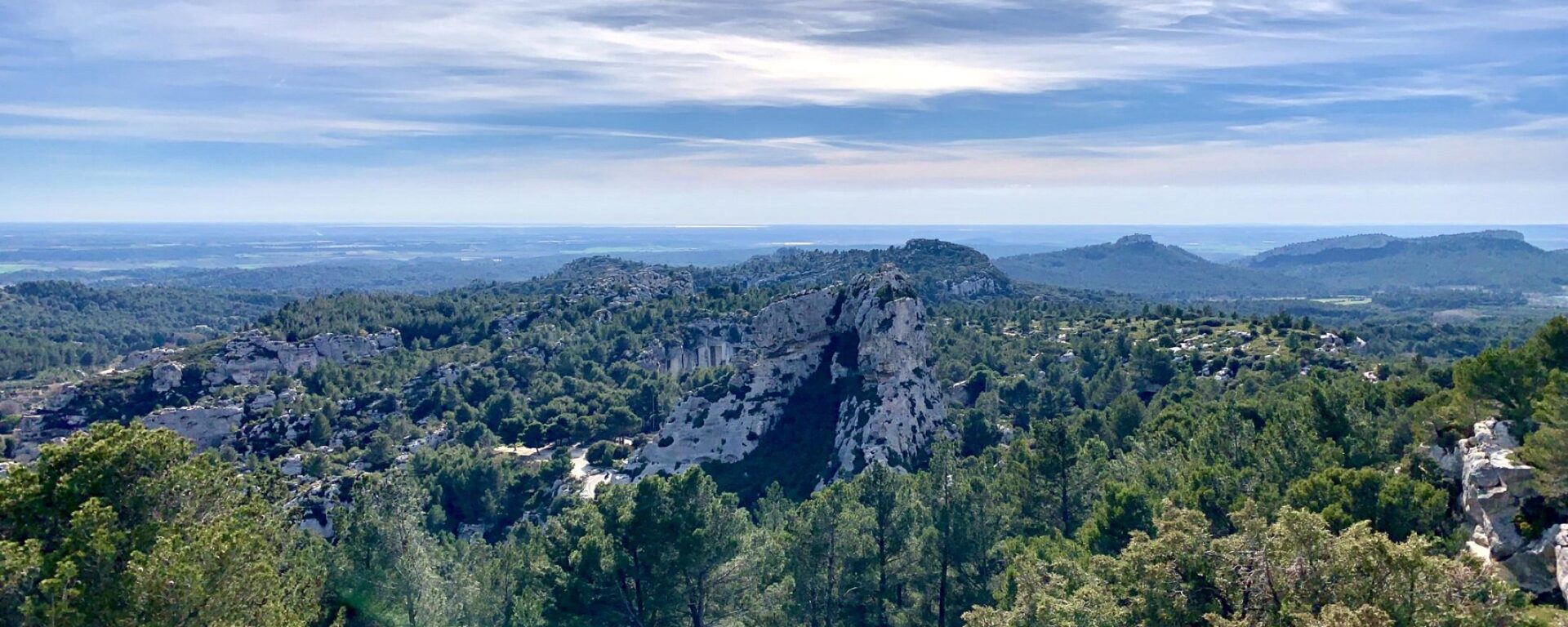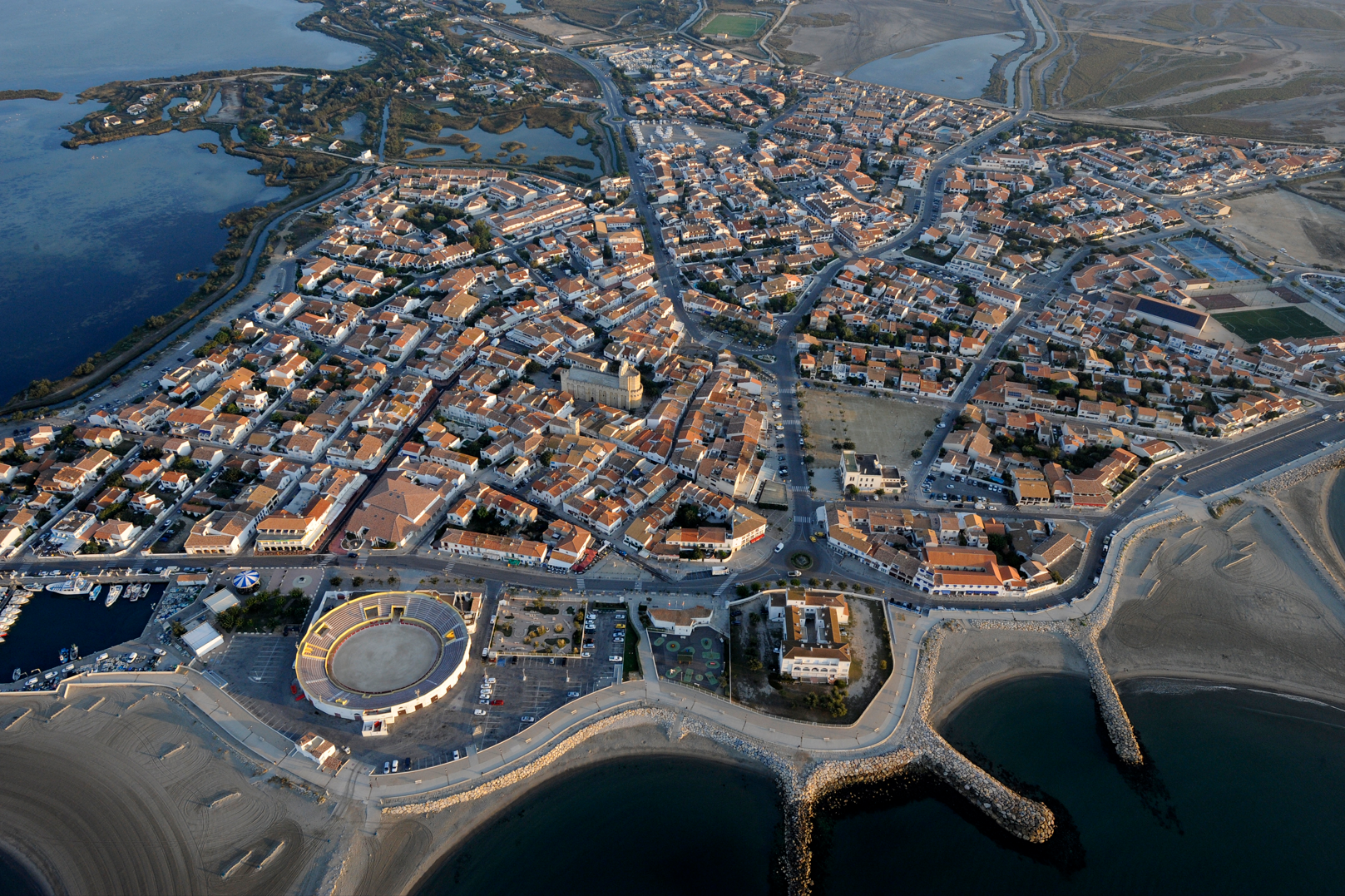
Les Saintes-Maries-de-la-Mer, capital of the Camargue
A legendary and historical site, its shore welcomed, at the dawn of Christianity, Mary Jacobé, Mary Salomé, and their servant Sara, persecuted Christians fleeing Palestine on a rudderless boat. At the center of the village stands the emblematic fortified church of Notre-Dame-de-la-Mer, offering a magnificent visit and an incredible view from its roof, accessible by a staircase of 53 steps! A major place of worship for the Romani people and numerous visitors, the church houses, beneath the choir, the crypt containing the statue of Sara and her relics…
Around the village, you’ll find fine sandy beaches, marshes, vast expanses of reeds, and ranches. Discover the lives of the Gardians, the horsemen who guard the bulls and horses of the Camargue. Ranches like the Manade des Baumelles, the Manade Jalabert, and the Manade de Méjanes offer you an immersion into this timeless world. Less than 4 kilometers from L’Estelle en Camargue, you can observe flamingos in their natural habitat at the Parc Ornithologique du Pont de Gau. The visit is self-guided with a map of the trails to follow. Information and tips are provided along the way. A little further, be enchanted by the sounds of hooves and guitars in a fairy-tale setting. The Camarkas Show blends equestrian and flamenco arts with typical regional music. The Camargue, vast and almost limitless, with its wild horses illuminated by unique light, is explored in a playful manner. Finally, on your way back, consider stopping at the Château d’Avignon, an unexpected blend of greenery, architecture, and technology, born from the innovative spirit of its owner Louis Prat-Noilly in the 19th century. You can stroll through a beautiful 21-hectare wooded park and, depending on public opening dates, visit the numerous rooms of the estate.
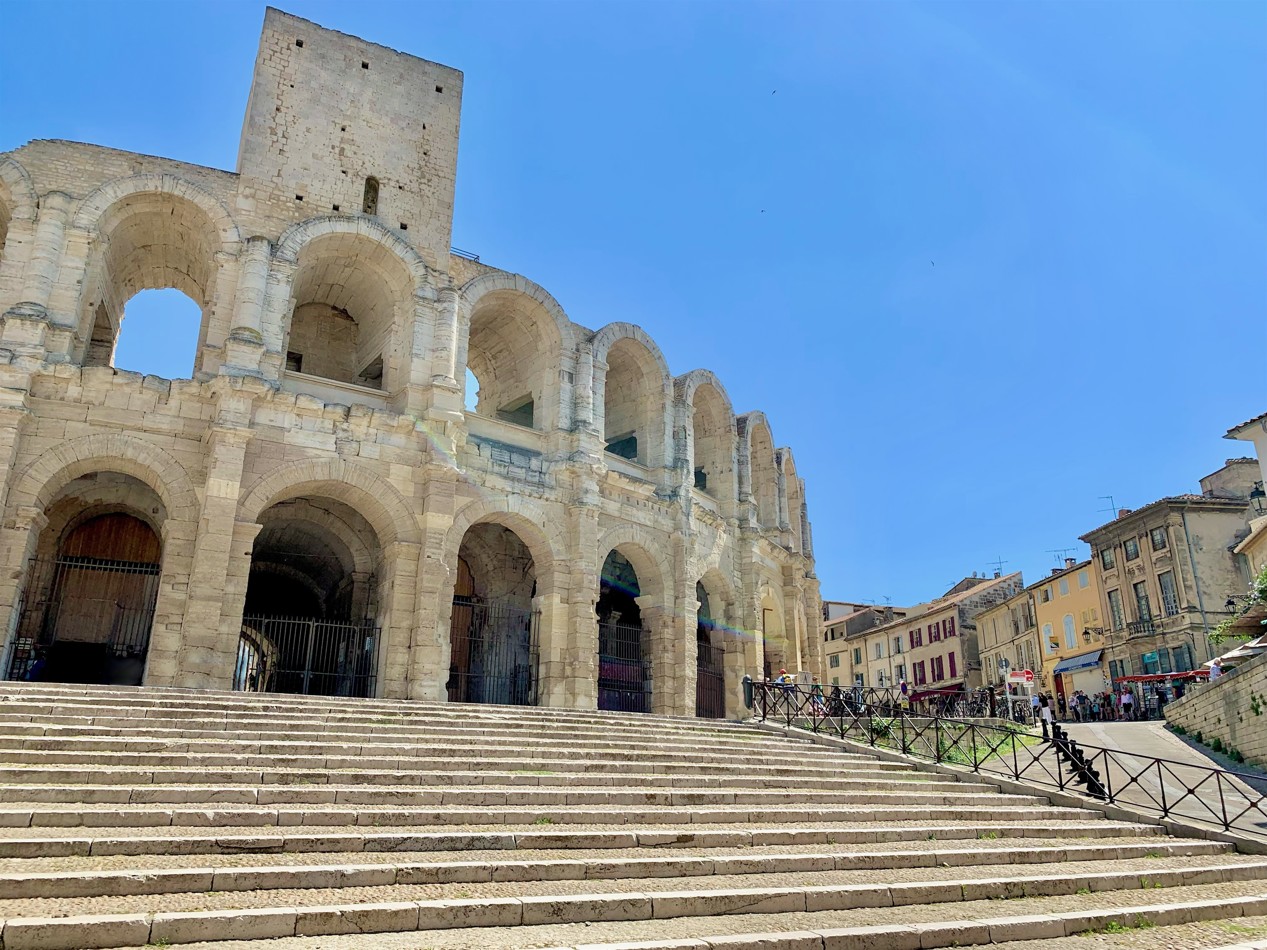
Arles, rich in heritage and culture
The ancient monuments of Arles, the Le Musée Départemental Arles Antique, the Muséon Arlaten, the Fondation Luma, and the Fondation Vincent Van Gogh offer extraordinary tours that allow you to discover the Roman origins of the city, its culture, and its illustrious visitors
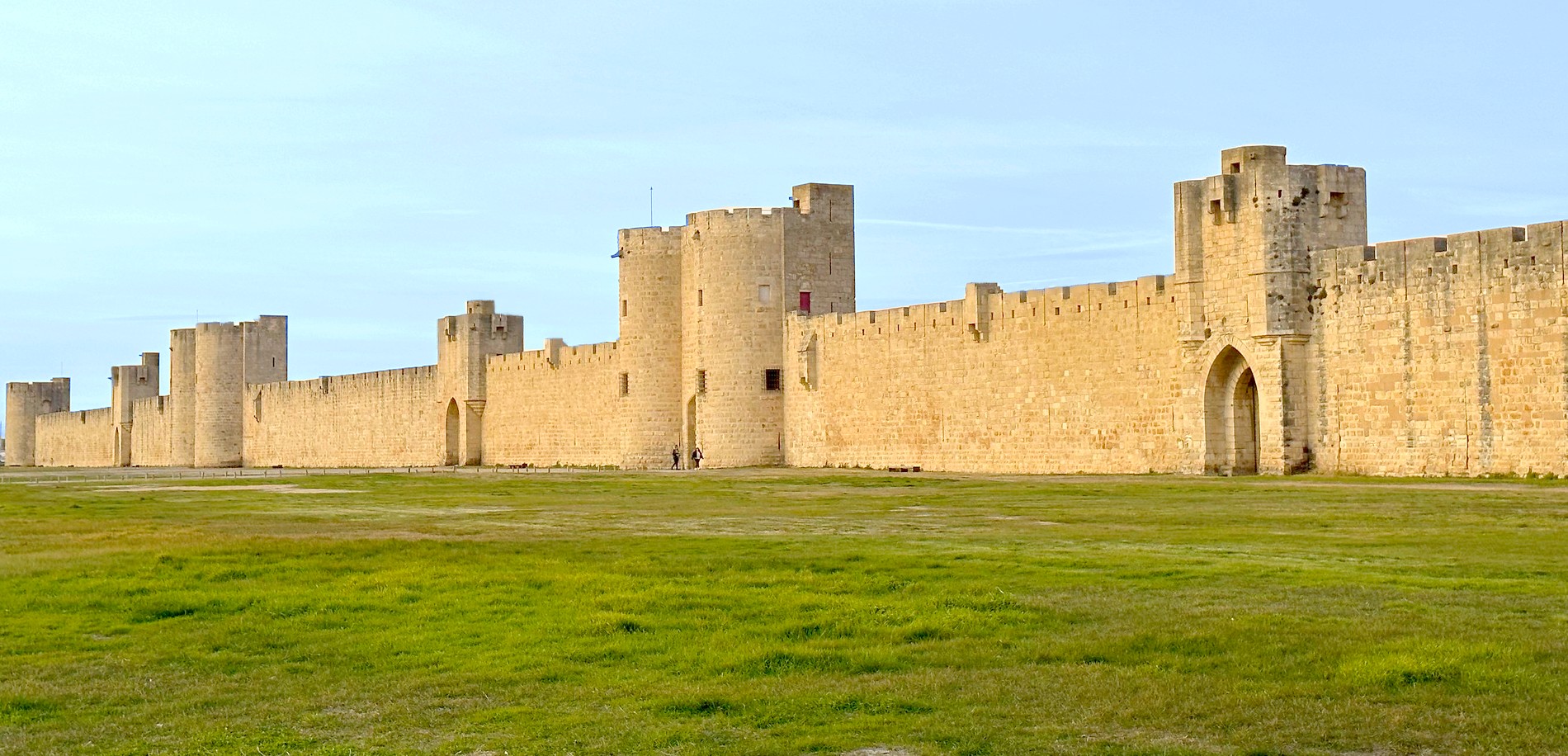
Aigues-Mortes, a medieval city at the heart of history
In an incredible state of preservation, this ancient city is protected by the remparts from the 13th century, erected at the request of Saint Louis. The tour de Constance, the 17th-century Penitent Chapels, the les salins displaying a mosaic of colors in the wild ponds of the Camargue… Wander through the cobbled streets and admire this true heritage site frozen in time. From the Middle Ages to modern times, this city has been the stage for numerous historical events that have shaped the culture and traditions of this emblematic place in the Camargue.
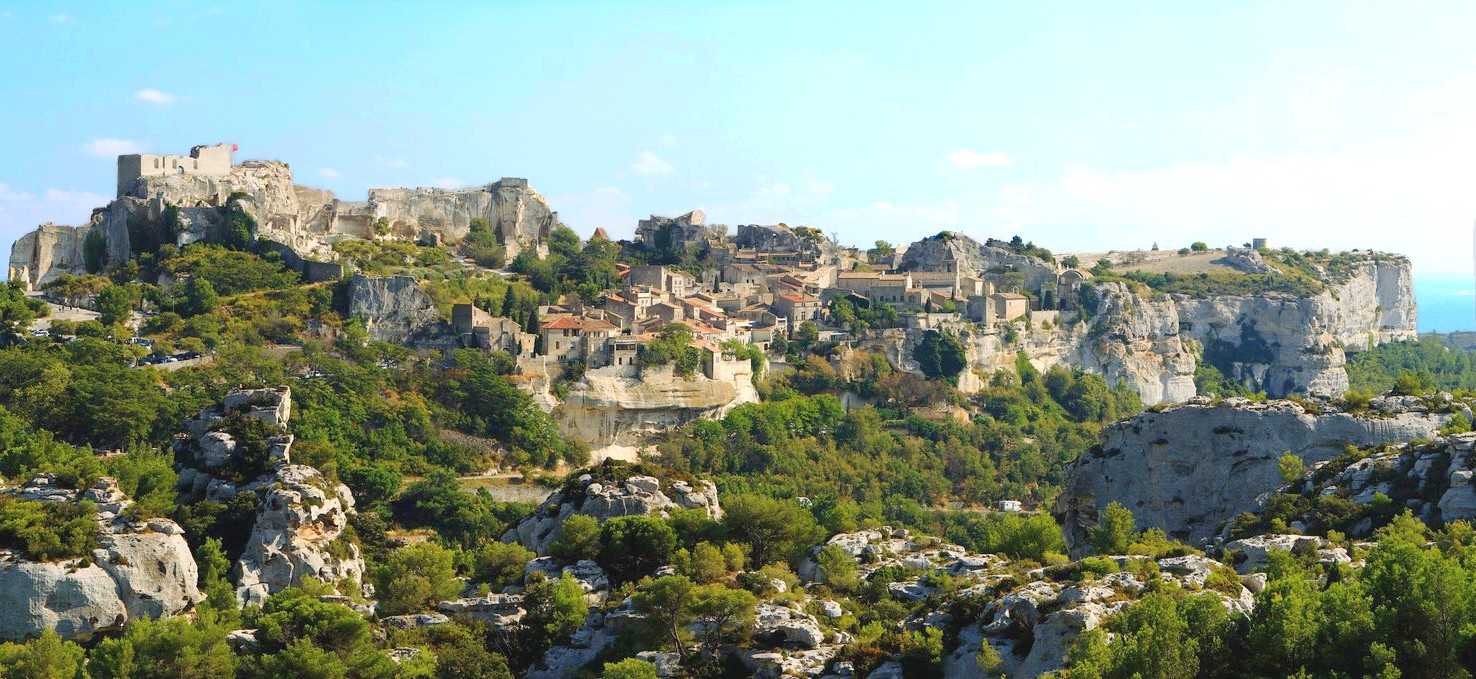
In the Alpilles
This year, the Carrières de Lumières in Les Baux-de-Provence highlight great artists and iconic places in the art world. Located a 50-minute drive from the hotel, the Carrières de Lumières are just steps away from the magnificent Château des Baux, which is also worth a visit.
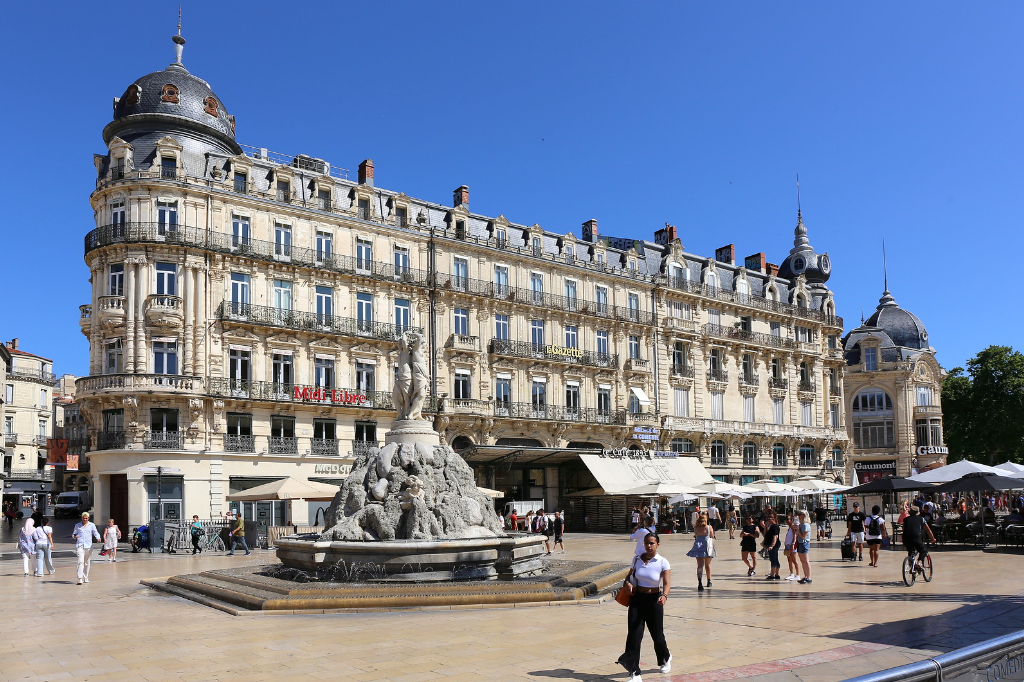
Montpellier, a dynamic and sunny city
The city of Montpellier is characterized by its historic buildings and blooming gardens. It is located in the neighboring region of Occitanie. The heart of this Mediterranean city is its pedestrian center, where you can stroll through the Place de la Comédie, walk up the Rue de la Loge leading to the Arc de Triomphe, beautifully showcasing various architectural styles. Take a moment to relax in the numerous green spaces, such as the Jardin des Plantes, the Esplanade, or the Place Royale du Peyrou. The musée d’arts Fabre is one of the most important in the province, with 900 works on display representing classical and neo-classical periods, including contemporary paintings by Eugène Delacroix.
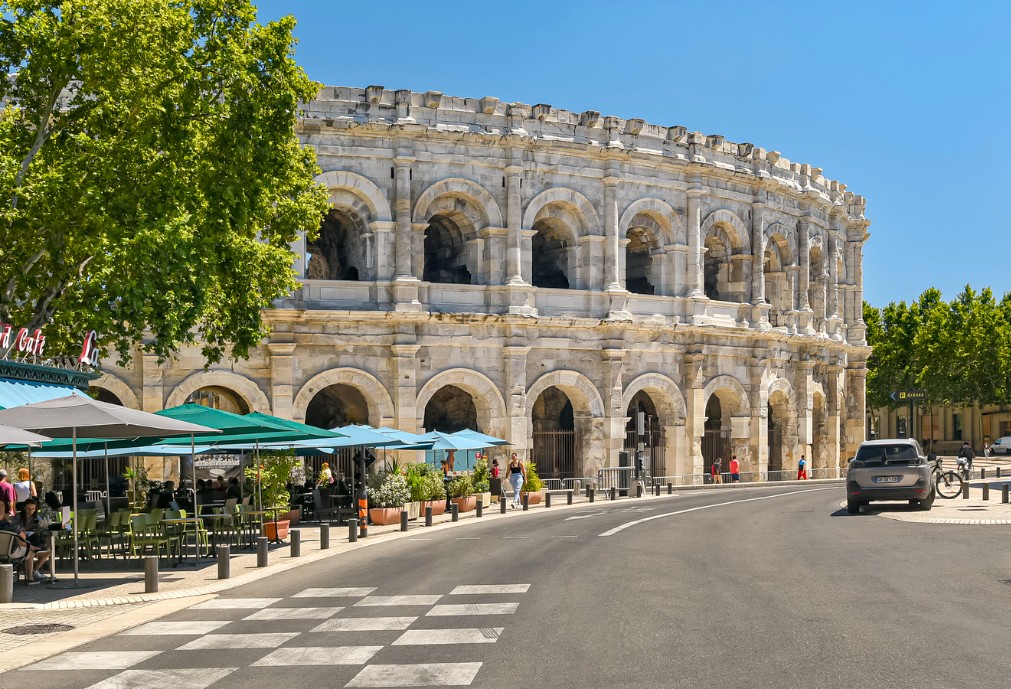
Nîmes, a city of art and history
Nîmes is globally renowned for the majesty and exceptional preservation of its Roman monuments. In this setting of 2,000 years of history, it enchants visitors with the beauty of its ancient center, a heritage-rich heart of the city that bears witness to a rich past. Discover the Arènes: Built in the 1st century as an amphitheater, today it hosts bullfights, concerts, and sports events. The Maison Carrée: This Gallo-Roman temple is an almost unique testament to this period of antiquity, having remained intact for 2,000 years. The Maison Carrée has recently been listed as a UNESCO World Heritage site. The Jardins de la Fontaine: The first public gardens in Europe, situated on a hill in the heart of the city, were created on a magnificent 15-hectare historical and natural site. The gardens are overlooked by the Tour Magne.
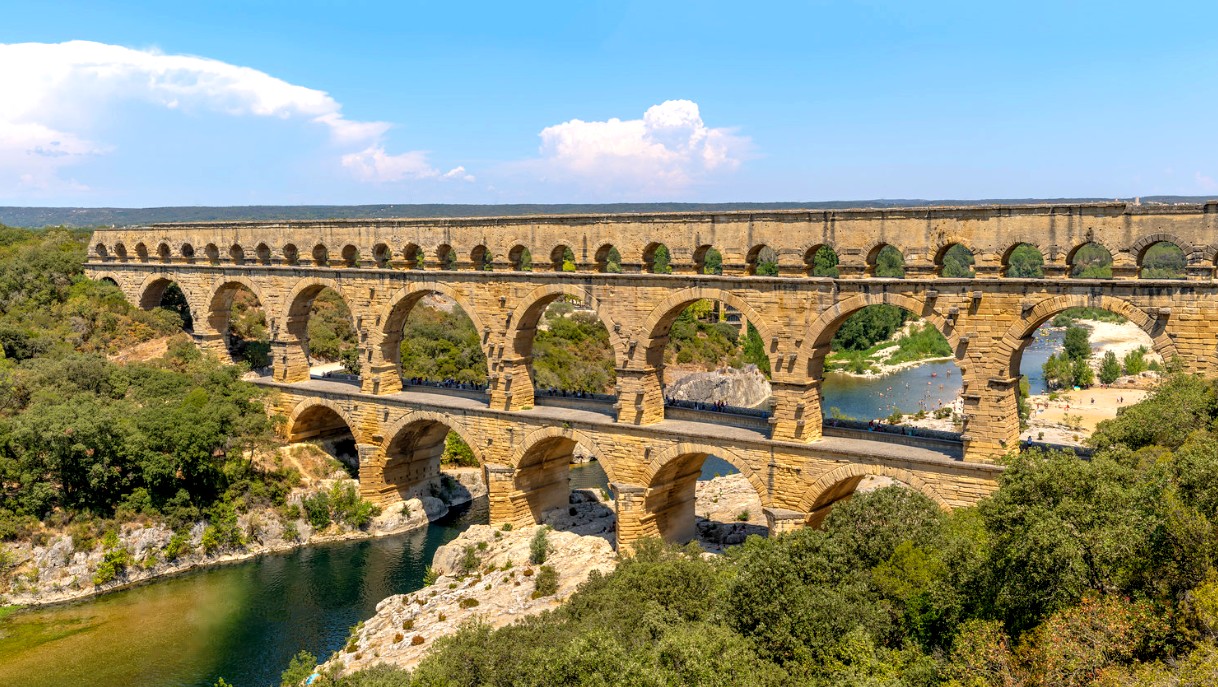
And a bit further away, the Pont du Gard – a must-see!
This ancient monument, also listed as a UNESCO World Heritage site, is located near Nîmes and Avignon. This Roman bridge, built on three levels, was used in Roman times as a road bridge. It ensured the continuity of the Roman aqueduct that carried water from Uzès to Nîmes. Today, it is considered a marvel of antiquity due to its functionality and technical prowess. Did you know that each year, sound and light shows held at the Pont du Gard attract hundreds of visitors?

